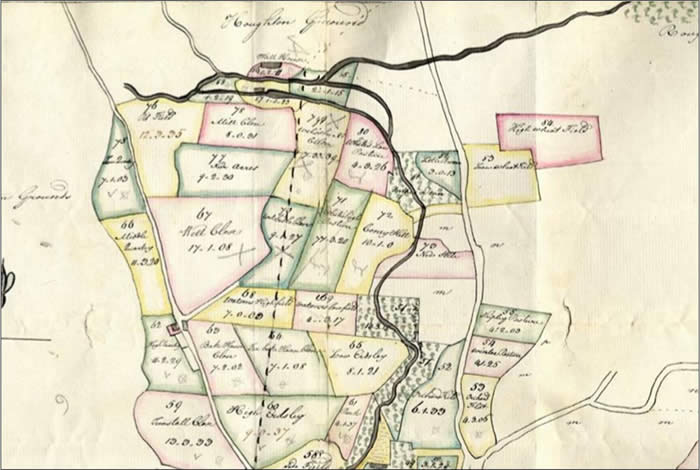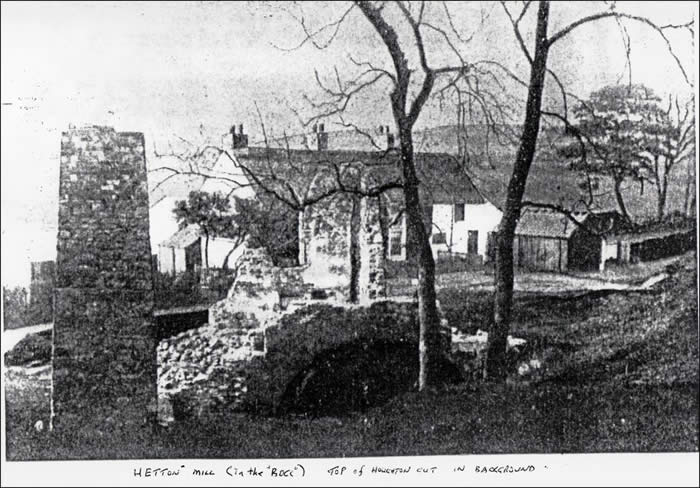
return to homepage
Hetton Local History Group - Boundary Heritage Walk
Point D information 
(GR 344 486 ) Directions to point E (GR 341 485) Continue along the path to the west walking close to a small pond on the right. This pond was once a mill pond held there by a brick dam with sluice gates. This structure was also part of the second later mill at Rainton Bridge. The path skirts the dam and drops to a lower level again running alongside a mill race for about 100metres near to Hetton House Woods. This race ran into a series of large ponds to the right through which the stream now flows. It is possible to see the bowl shape of the ponds. The water was then led through another mill race at the downstream end which crossed the path and then ran parallel to the path but some 30metres away to the left of the path. Keep walking through the kissing gate close to the stream which has steep eroded banks for some distance.. After about 250 metres the path meets up with a stream on the left. This is part of the mill race from the area we have just passed through as well as a supply of water coming down in a stream from the village of Hetton to the south. Just before the path reaches the main road (B1284) look at the stream bed and it is possible to see that at one time it has been lines with stone blocks. (Point E) QR Code or link to information
1776 map of John Lyon’s property. The mill is shown centre top lying alongside the beckside. Picture of Hetton Mill at Hetton House Wood taken about 1950 just before demolition |
-- info@hettonlocalhistory.org.uk --


